Are you tired of spending a fortune on hair treatments and products for your human hair wig? Washing your diy hair wig regularly is key to maintaining its quality and ensuring it lasts longer.
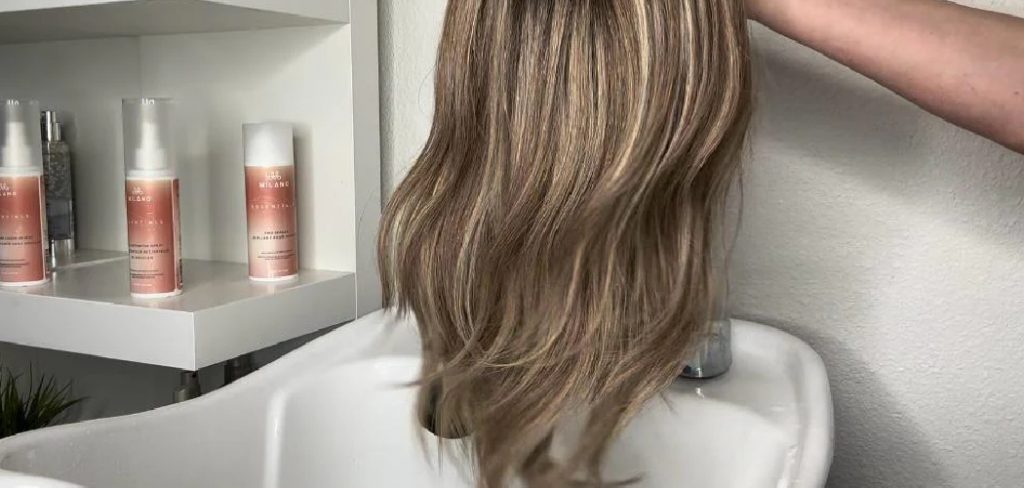
Washing a human hair wig requires special care to maintain its quality, softness, and longevity. Unlike synthetic wigs, human hair wigs are made from real hair, making them more delicate and in need of proper attention. Regular cleaning helps to remove dirt, oil, and product buildup, ensuring the wig looks and feels as natural as possible. With the right techniques and tools, you can keep your wig in excellent condition and extend its lifespan.
This guide on how to wash human hair wig will walk you through the essential steps to effectively wash and care for your human hair wig.
What Are the Benefits of Washing Your Human Hair Wig?
Washing your human hair wig has several benefits, including:
- Maintains Cleanliness: Just like your natural hair, wigs can accumulate dirt, oil, and product buildup over time. Regular washing helps to keep the wig clean and free from buildup that can cause it to appear dull and lifeless.
- Restores Shine and Vitality: Washing your human hair wig helps to remove any residue from styling products or pollutants that may have accumulated on the strands. This restores its shine and makes it look vibrant and healthy again.
- Reduces Odor: With regular wear, wigs can develop an unpleasant odor due to sweat and styling products. Proper cleaning helps to eliminate these odors and keep your wig smelling fresh.
- Prevents Damage: Just like our natural hair, wigs also need proper care and maintenance to prevent damage. Washing your wig regularly helps to remove tangles, knots, and other forms of debris that can cause breakage or damage to the strands.
- Prolongs Lifespan: By washing your human hair wig regularly, you are not only keeping it clean but also prolonging its lifespan. Dirt buildup, product residue, and pollutants can lead to wear and tear on the strands over time if left unaddressed.
What Will You Need?
To properly wash your human hair wig, you will need the following items:
- Wig shampoo
- Conditioner (specifically made for wigs)
- Wide-tooth comb or wig brush
- Towel
- Water
- Sink or basin
It is important to note that regular shampoos and conditioners may be too harsh for wigs and can cause damage. It is best to use products specifically made for wigs to ensure the best care.
10 Easy Steps on How to Wash Human Hair Wig
Step 1: Detangle the Wig
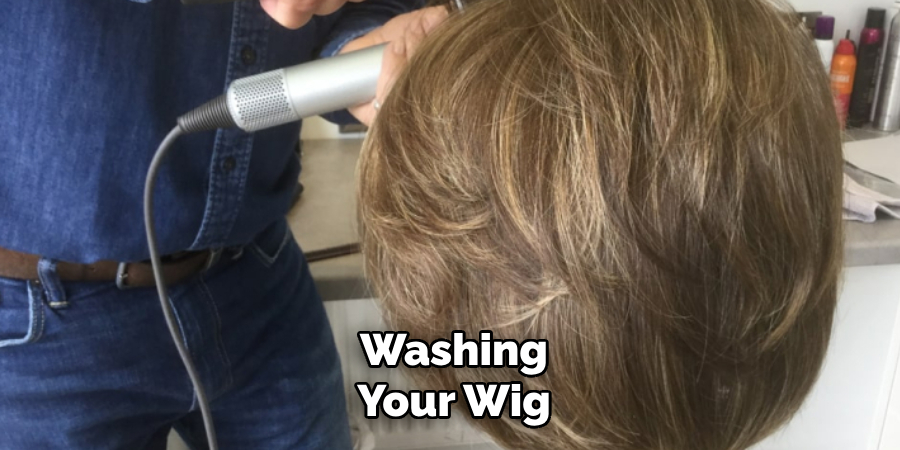
Before washing your wig, gently detangle it to prevent knots and tangles from worsening during the cleaning process. Use a wide-tooth comb or a wig brush to carefully remove any knots, starting from the ends and gradually working your way up to the roots. Be gentle to avoid pulling or damaging the hair strands. For stubborn tangles, you can use a small amount of wig conditioner or a detangling spray to make the process easier and smoother.
Step 2: Rinse the Wig
Hold the wig under cool to lukewarm running water, ensuring the water flows from the roots to the ends. This direction prevents tangling and maintains the integrity of the hair fibers. Avoid soaking the wig in a basin, as this can lead to unnecessary tangles and damage. Make sure the wig is thoroughly wet before proceeding to the next step.
Step 3: Apply Wig Shampoo
Gently apply a small amount of wig shampoo to your hands and work it into the wig, starting from the roots and moving toward the ends. Use your fingers to massage the shampoo through the hair fibers, avoiding rough or circular motions that could cause tangling. Focus on areas that may have accumulated oils or dirt, such as the cap and nape. Be mindful not to stretch or pull the fibers, especially for synthetic wigs. Once the shampoo is evenly distributed, proceed to rinse the wig thoroughly.
Step 4: Wash the Wig Carefully
Rinse the wig under cool, running water, allowing the water to flow in the same direction as the hair to prevent tangling. Keep the water pressure gentle, avoiding rough handling during the rinse. Ensure all the shampoo is thoroughly removed, as any residue can affect the texture or appearance of the wig. If needed, you can gently comb through the fibers with your fingers while rinsing to help guide the water through the strands. Take your time to ensure no areas are missed, leaving the wig clean and refreshed.
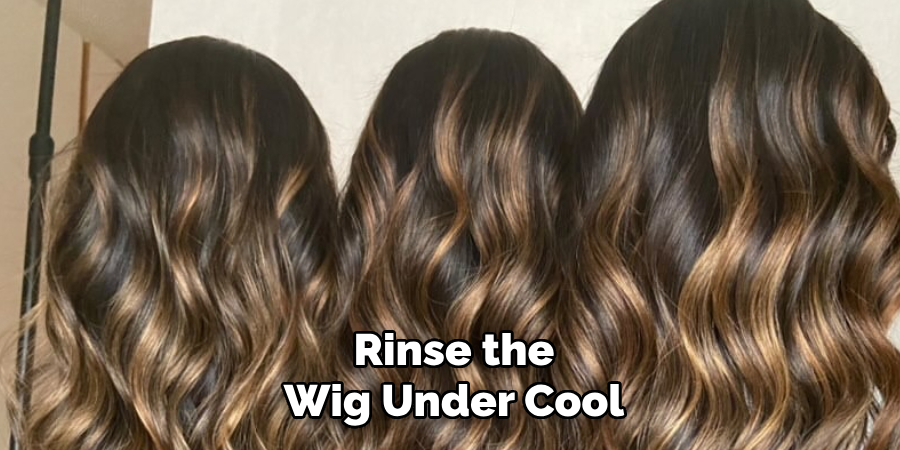
Step 5: Rinse Thoroughly
After shampooing, it’s important to thoroughly rinse the wig to remove all traces of shampoo and any buildup from styling products. This helps to maintain the quality and appearance of the wig.
To rinse the wig, use lukewarm water and gently hold the wig under the running water, allowing it to flow in the same direction as the hair. Be careful not to use excessive force or rough handling during this step, as it can cause tangling or damage to the fibers.
Step 6: Condition the Wig
After the wig has been thoroughly rinsed, apply a wig-friendly conditioner evenly throughout the strands, focusing on the mid-lengths and ends. Avoid applying conditioner directly to the cap or roots, as this may loosen the delicate construction of the wig. Gently work the conditioner into the fibers using your fingers or a wide-tooth comb, ensuring even distribution. Leave the conditioner in for the recommended time stated on the product label, allowing it to deeply nourish and restore the wig’s softness and shine.
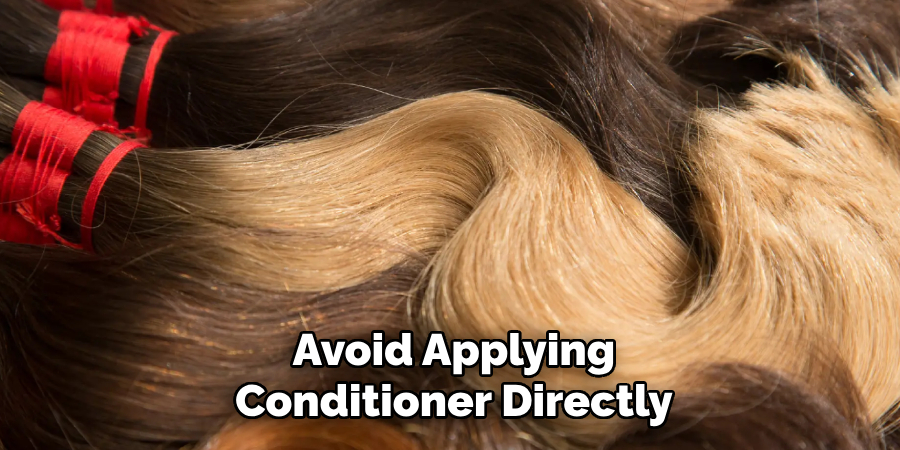
Step 7: Rinse Again
After allowing the conditioner to work its magic, it is time to rinse the wig thoroughly. Using cool to lukewarm water, gently rinse the wig from the top to the ends, ensuring all traces of conditioner are removed. Avoid scrubbing or rubbing the fibers, as this could damage them or create unnecessary tangling. Run your fingers through the strands to confirm that no product residue remains, leaving the wig clean, soft, and ready for the next steps in your care routine.
Step 8: Pat Dry with a Towel
Using a clean, dry towel, gently pat the wig to remove excess water. Avoid twisting or wringing the fibers, as this can cause damage or distort the wig’s shape. Lay the wig flat on the towel and softly press down to absorb the moisture. Remember to handle the wig delicately during this process to maintain its integrity and style. Once the excess water is removed, the wig will be ready for air drying or further styling steps.
Step 9: Allow the Wig to Air Dry
Place the wig on a wig stand or mannequin head to allow it to maintain its shape while drying. Position it in a well-ventilated area, away from direct sunlight or heat sources, as excessive heat can damage the fibers. Ensure the wig is evenly spread out to promote thorough drying. Avoid using hair dryers or other heating tools at this stage, as air drying ensures a gentle and natural process that preserves the wig’s quality and longevity. Patience is key, as this step may take several hours depending on the wig’s density and material.
Step 10: Style as Desired
Once the wig is completely dry, it’s time to style it to your liking. Use a wig comb or a brush designed for wigs to gently detangle and shape the hair. If the wig is heat-resistant, you may use styling tools like curling irons, flat irons, or even blow dryers on a low heat setting to achieve your desired look. However, always check the manufacturer’s guidelines to ensure compatibility. For synthetic wigs, stick to non-heated styling options such as rollers or styling creams specifically made for such materials.
By following these simple care and styling tips, you can ensure that your wig stays looking beautiful and natural for as long as possible.
5 Things You Should Avoid
- Using Hot Water
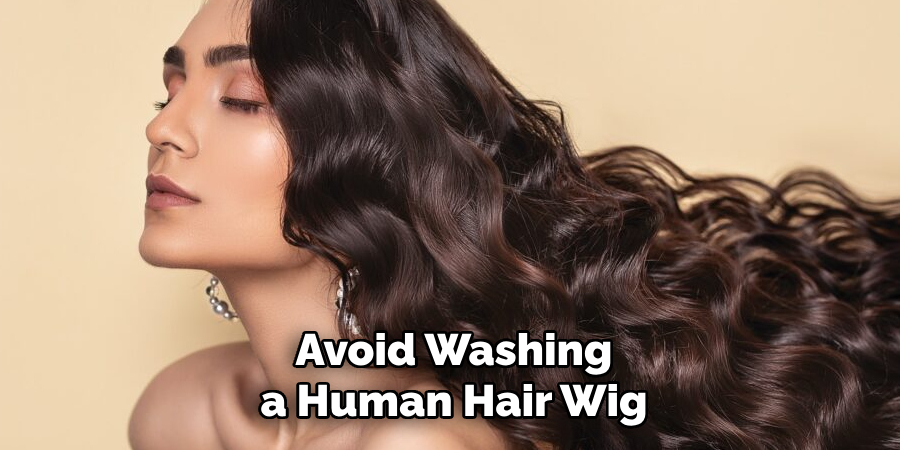
Avoid washing a human hair wig with hot water, as it can damage the hair strands and weaken the wig’s structure. Always use lukewarm or cool water to maintain the hair’s integrity and prevent any unnecessary frizz or tangling.
- Aggressive Brushing
Do not brush the wig while it is wet, as wet hair is more prone to breakage. Use a wide-tooth comb or a detangling brush specifically designed for wigs, and gently work through tangles starting from the ends and moving upward.
- Harsh Shampoos or Conditioners
Steer clear of products containing sulfates, alcohol, or other harsh chemicals. These can strip the natural oils from the hair and lead to drying or matting. Use shampoos and conditioners that are specially formulated for human hair wigs.
- Skipping Deep Conditioning
Failing to condition the wig after washing can leave the hair dry and brittle. Human hair wigs need moisture to stay soft and lustrous, so always follow up with a deep conditioning treatment.
- Drying with High Heat
Avoid using high heat when drying your wig, as it can cause damage or shorten its lifespan. Instead, gently pat the wig with a soft towel to remove excess water, then allow it to air-dry on a wig stand in a well-ventilated area.
Conclusion
How to wash human hair wig properly is essential to maintain its quality and prolong its lifespan.
By using gentle, sulfate-free products, avoiding excessive heat, and ensuring regular conditioning, you can keep the wig looking natural and vibrant. Proper care not only enhances the wig’s appearance but also preserves its durability, making it a worthwhile investment.
Always handle your wig with care and follow these steps to ensure it remains in the best condition possible.
About the Author
Jane Hubbard is a passionate beauty expert with a wealth of experience in makeup, hair, and overall beauty techniques. After years of working as a hairdresser specialist, she followed her entrepreneurial spirit and started her own consultancy business.
Jane has always been driven by her desire to help others feel confident in their own skin, and she does this by sharing her knowledge, experiences, and practical beauty tips. Through her consultancy, she empowers individuals to embrace their unique beauty, offering tailored guidance that boosts both self-esteem and personal style.
Professional Focus
- Specializes in makeup, hairstyling, and beauty consulting.
- Provides personalized beauty advice, tips, and techniques to help individuals feel confident in their appearance.
- Dedicated to staying up-to-date with the latest industry trends and developments.
- Passionate about creating a comfortable and empowering experience for every client.
Education History
- University of Craft and Design – Bachelor of Fine Arts (BFA) in Woodworking and Furniture Design
- Woodworking Apprenticeships – Extensive hands-on training with skilled craftsmen to refine carpentry and furniture making techniques
- Online Courses & Masterclasses – Continued education in advanced woodworking techniques, design principles, and specialized tools
Expertise:
- Makeup artistry, hairstyling, and beauty consulting.
- Personalized beauty techniques to enhance confidence and self-expression.
- Educating clients on how to maintain their beauty routines at home.
